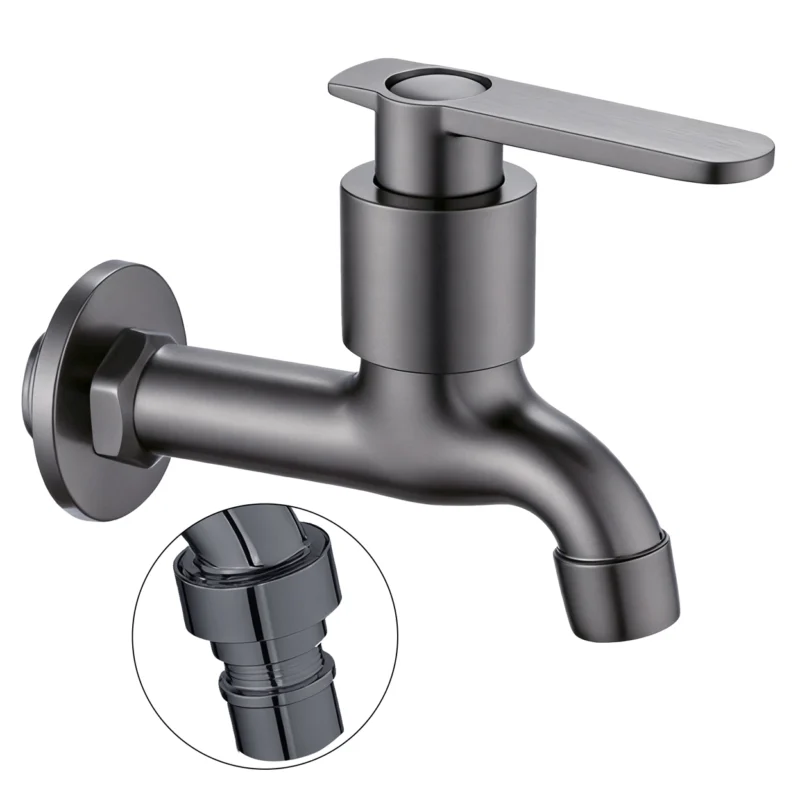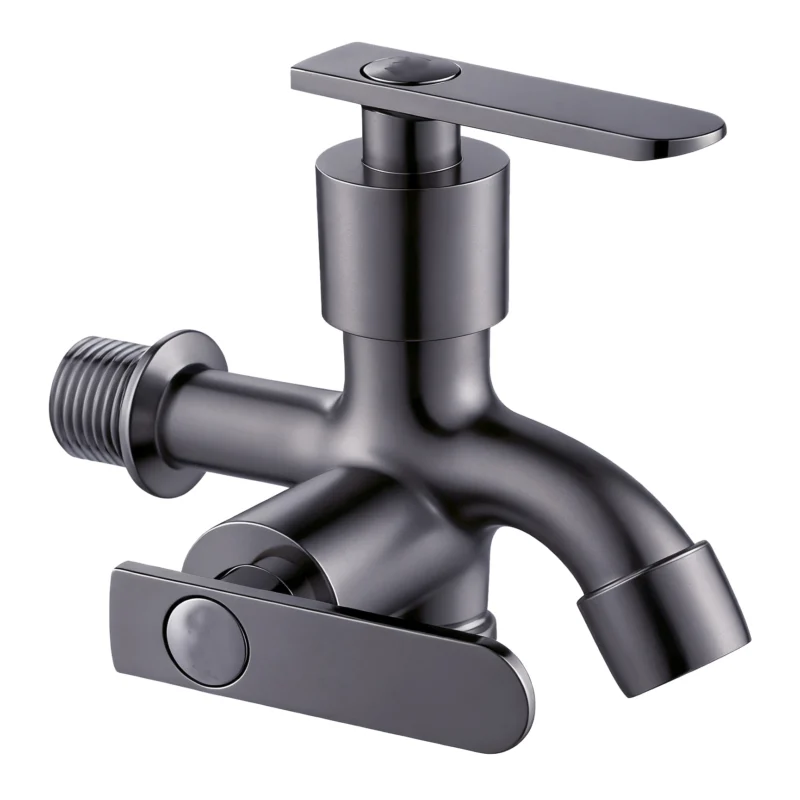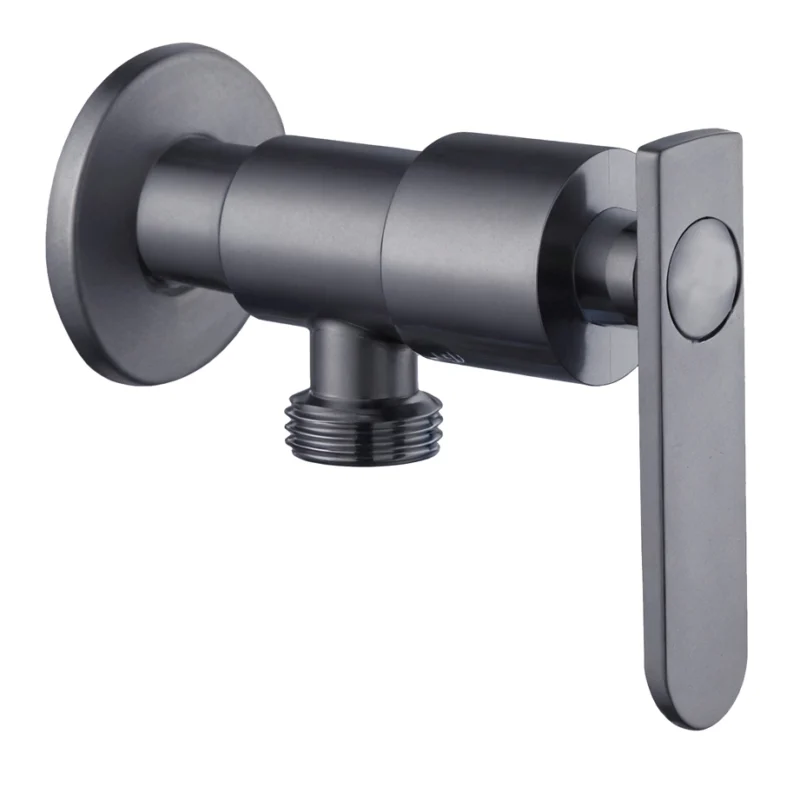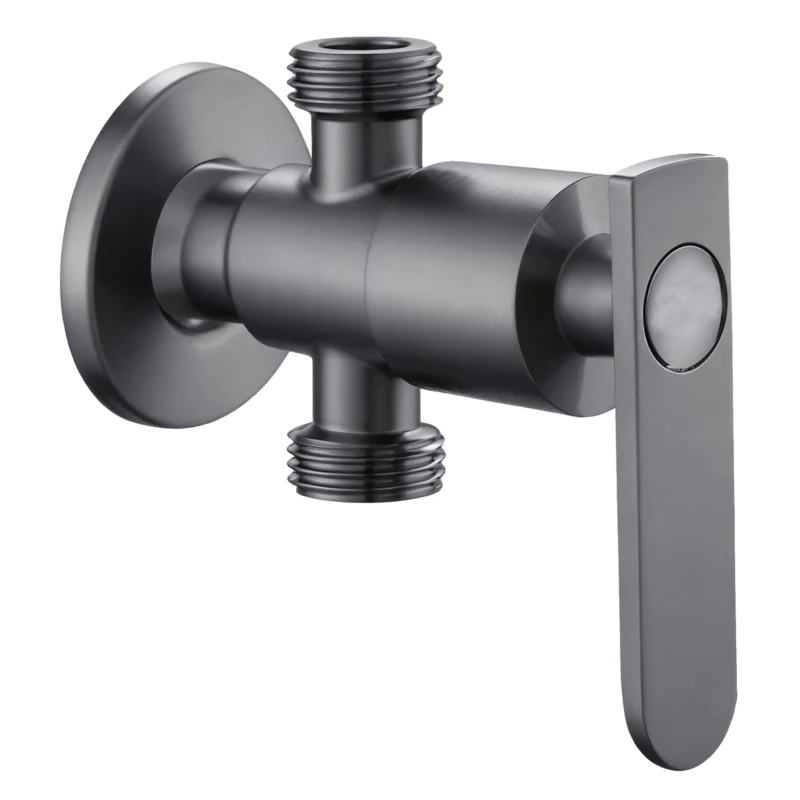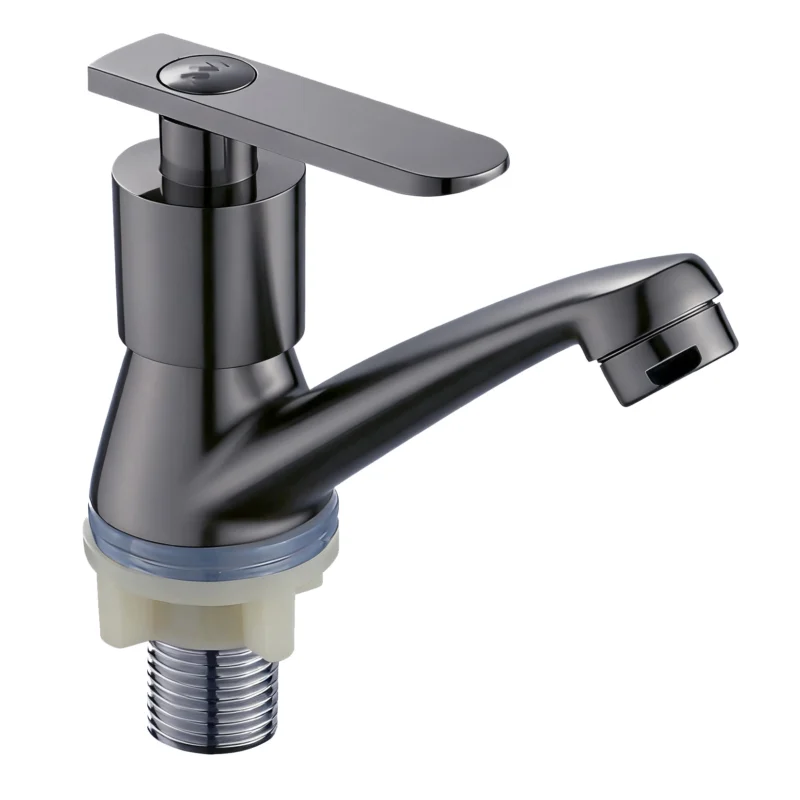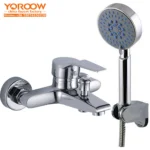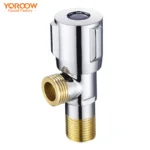The kitchen tap steel single-cold basin faucet is highly favored in the field of kitchen utensils due to its 304 stainless steel material. 304 stainless steel boasts outstanding corrosion resistance, high-temperature resistance, and oxidation resistance. The chromium contained in it forms a dense oxide film on the surface, effectively resisting the erosion of acidic and alkaline substances, ensuring that the faucet maintains stable performance and a smooth appearance in the humid kitchen environment for a long time. Relying on advanced production processes and strict quality control systems, Fábricas de torneiras chinesas conduct meticulous management of various links, including raw material screening, casting, processing, and assembly. This makes each kitchen tap steel single-cold basin faucet highly durable and aesthetically pleasing, meeting the daily use needs of home kitchens as well as the high-intensity work requirements of commercial kitchens. Its modern and minimalist design style can perfectly integrate with various kitchen decoration styles. Moreover, it can effectively reduce the accumulation of water scale and stains, reducing the difficulty of cleaning and maintenance. The following is a detailed introduction to its installation method.
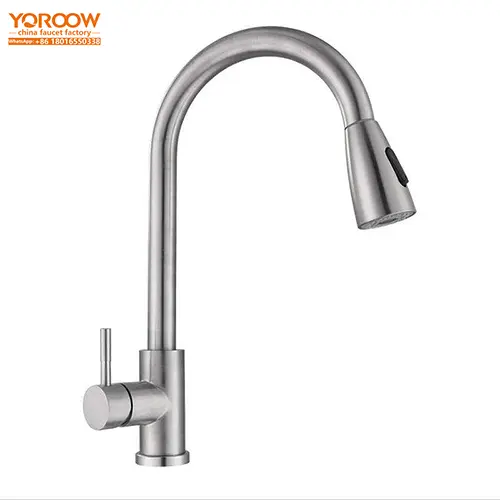
(I) Precauções antes da instalação do produto
Before installing the kitchen tap steel single-cold basin faucet, it is essential to close the main water valve at home to prevent water from spraying during the installation process, which could cause inconvenience and waste. Carefully check the product accessories, including the faucet body, inlet pipes, installation nuts, gaskets, etc., and inspect for any defects, deformations, or scratches caused during transportation. If any problems are found, contact the after-sales department of Chinese faucet factories promptly for handling. In addition, confirm the material and thickness of the installation area on the kitchen countertop or sink. Different countertop materials (such as quartz stone, artificial stone, stainless steel, etc.) have different installation considerations, and the countertop thickness should be suitable for the faucet installation requirements. Generally, a countertop thickness between 10 – 50 millimeters is recommended to ensure a stable installation.
(II) Ferramentas de instalação necessárias
To install the kitchen tap steel single-cold basin faucet, the following tools are required: an adjustable wrench or pipe wrench, which is used to tighten water pipe joints and nuts; a screwdriver, mainly for disassembling or installing fixing components; PTFE tape, which is wrapped around the water pipe joints to enhance sealing and prevent leakage; a tape measure, used to measure the size of the installation holes to ensure precise installation; and a spirit level (optional), which can assist in adjusting the verticality of the faucet during installation to ensure an aesthetically pleasing installation effect.
(III) Passos de preparação antes da instalação
First, thoroughly clean the kitchen countertop and the installation area of the sink, removing dust, oil stains, and other debris to avoid affecting the installation accuracy and sealing effect. If the countertop does not have pre-drilled installation holes, use professional hole-opening tools to create holes according to the size of the faucet installation holes. When drilling, strictly follow the operation specifications, control the position and depth of the holes to prevent the countertop from cracking or being damaged. After completing the hole opening, sand the edges of the holes with sandpaper to make them smooth and flat, reducing wear on the water pipes and faucet components. At the same time, take out each component of the faucet from the packaging and pre-assemble them according to the instruction manual to familiarize yourself with the installation structure and process, preparing for the formal installation.
(IV) Processo de instalação normalizado
Pass the main body of the kitchen tap steel single-cold basin faucet through the installation hole on the countertop or sink. From below the countertop, put on the gasket and installation nut in sequence, and use an adjustable wrench or pipe wrench to tighten the nut evenly and firmly to fix the faucet. During the tightening process, pay attention to keeping the faucet vertical to avoid tilting. Then, connect the inlet pipe. Connect one end of the inlet pipe to the water inlet of the faucet, wrapping 10 – 15 turns of PTFE tape clockwise at the joint to ensure a tight seal. Then connect the other end of the inlet pipe to the kitchen water supply pipeline, tightening the joint with tools as well. When connecting, pay attention to distinguish between cold and hot water pipes (single-cold faucets are only connected to the cold water pipe) to avoid incorrect connection.
(V) Pontos-chave dos ensaios de utilização e da inspeção
After the installation is completed, slowly open the main water valve at home and observe the water flow of the faucet. Check whether there is any water leakage at the connection between the faucet and the countertop, the joints of the inlet pipes, and other parts. Focus on checking the nut tightening areas and the parts where the PTFE tape is wrapped. If water droplets seep out, close the water source and re-tighten the nuts or adjust the way the PTFE tape is wrapped. At the same time, test the flexibility of the faucet switch to ensure smooth adjustment of the water flow size without any jamming or abnormal resistance. In addition, check whether the water flow is uniform and stable. If the water flow is irregular or splashing occurs, it may be due to air in the pipeline or blockage by impurities. This can be resolved by turning the faucet on and off several times or cleaning the filter screen.
(VI) Problemas comuns de instalação e soluções
If the faucet leaks after installation, it may be caused by loose nuts, improper wrapping of PTFE tape, or damaged gaskets. First, try to re-tighten the nuts. If the leakage persists, remove the inlet pipe, check whether the PTFE tape is evenly wrapped, and re-wrap it if necessary. If the gasket is damaged, replace it with a new one in a timely manner. If the water flow of the faucet is small, it may be due to blockage of the inlet pipe, insufficient water supply pressure, or blockage of the internal filter screen of the faucet. First, check the water supply pressure. If the pressure is normal, remove the inlet pipe for cleaning. At the same time, take out the internal filter screen of the faucet, clean the impurities, and then reinstall it.
(VII) Conselhos de segurança e sugestões de manutenção
During the installation and use of the kitchen tap steel single-cold basin faucet, avoid using excessive force to turn the components to prevent damage to the faucet or water pipes due to over-tightening. In daily use, regularly wipe the surface of the faucet with a soft cloth and a neutral cleaner to remove water stains and dirt, keeping it clean and shiny. Avoid using hard cleaning tools such as steel wool to prevent scratching the surface of the faucet. If the faucet is not used for an extended period, close the main water valve and open the faucet to empty the water in the pipes, preventing the pipes from freezing and cracking or the growth of bacteria. It is also recommended to check the connection parts of the faucet every six months to ensure that the nuts are not loose and the joints are well-sealed, guaranteeing the normal use and service life of the faucet.
Chinese faucet factories always provide users with reliable kitchen tap steel single-cold basin faucets with high-quality products and professional services. Through the above detailed installation guide, we hope users can complete the installation smoothly and enjoy a convenient and comfortable kitchen water usage experience.

